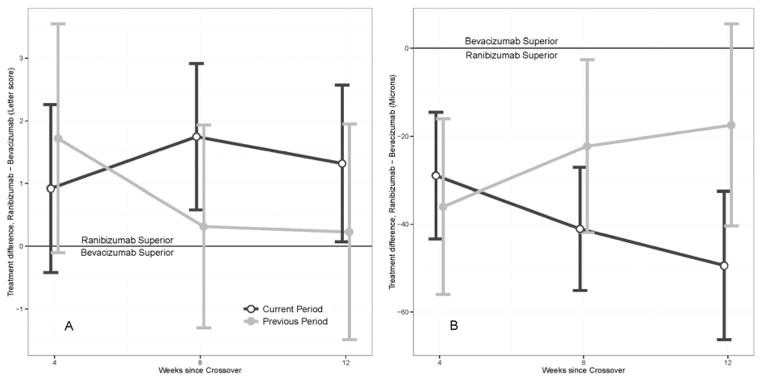Figure 2.
Differential first-order carry-over effect (residual effect of the drug from the preceding period), shown as a treatment effect difference between ranibizumab and bevacizumab given in the previous period for (A) change in visual acuity and (B) central subfield mean thickness on optical coherence tomography at 4, 8, and 12 weeks after crossover. The treatment difference attributable to the first-order carry-over effect is shown in gray. The treatment difference attributable to drugs in the current period (i.e., the differential effect of the two drugs as estimated in the primary analysis of the study) is shown in black for comparison. Note that the treatment difference between ranibizumab and bevacizumab for the current period (in black) at 12 weeks after crossover (at outcome assessment) is the result estimated for 3 and 9 months in the primary analysis (1.3 letters (p=0.039) and −48 microns (p<0.001), both favoring ranibizumab).

